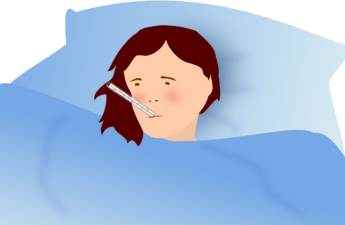6 Steps to Prevent a Fall from National Council on Aging on Vimeo.
By Lindsay Bosslet
Public Health – Seattle & King County
It’s Fall Prevention Week! And before you panic, no, Public Health is not trying to take away your pumpkin spice. We’re talking about the other kind of fall.
Among older adults, falls are the leading cause of injury and deaths, unintentional injuries and hospital admissions for trauma. Our fall prevention team works one-on-one with seniors to make sure their homes are safe.
We sat down with MaryBeth Sabine to learn more about her work with the program and how she helps seniors stay independent.
MaryBeth, tell us about why fall prevention is so important for seniors.
Accidents can happen at any time in your life, but as people age, they can lose some physical strength, and their bones can be more susceptible to fracture. An injury could put them at risk for other complications, such as infection. Because falls are more likely to happen to seniors, and because when they happen they can be more harmful to seniors, we focus our program on older adults.
I understand the fall prevention program provides one-on-one consultations in people’s homes. How does that work?
Our team educates older adults on how to be safe and independent in their home and to reduce re-occurring falls. In addition to making recommendations on how to reduce their fall risks and referring the client to other community agencies, we can provide various fall safety items for the home. A lot of our clients come from referrals from our community partners, such as firefighters and EMTs, hospital emergency departments, physical and occupational therapists, home health providers, and doctors.
The client must be over 50 years old, live in King County (but unfortunately, not Seattle), and have had a fall in the past six months or be at high risk of falling as assessed by a healthcare professional.
People who self-enroll or are referred to our program will work with me or one of my colleagues to schedule a visit over the phone. During our appointment, I’ll walk through the home and the client’s routine to determine any and all trip hazards. This is anything from cords on the ground, to unsafe bathroom spaces. After doing that, I also have a conversation with my clients to learn who they are and why they may have fallen or be at risk for falling. I learn about their social life, their mental health and cognitive abilities, and I do a quick physical assessment to see how fast they can get up on their feet.
This is the listening and observing part of the process, and it takes at least an hour. This time is critical because it provides the information I need to make strong and helpful recommendations.
What are some typical recommendations?
It really depends on the situation. I might propose a rearrangement of furniture, and I might suggest using a walker or a cane. I might refer a client to physical therapy to improve balance, and I might refer clients to PEARLS, a program that helps seniors experiencing depression. I try to look at the issue holistically and provide a combination of tools and resources.
What if a client can’t afford these recommendations?
First of all, our program is 100% free, and there is no income qualification. We do our best to make recommendations that are affordable, usually via other King County resources. I’ve even worked with landlords to cover the costs of bathroom remodels!
How do you sign up?
Most people are referred to us after they fall or if their healthcare provider thinks they may be at risk for falling, but anyone can call 206-263-8544 or email: alan.abe@kingcounty.gov to enroll.
What would you tell seniors considering your services?
Don’t wait! Falls don’t have to be inevitable. Most people don’t think they need help, and they don’t want someone telling them what to do. Our team is honest and enthusiastic, and our primary goal is to keep people independent – not hold them back.


